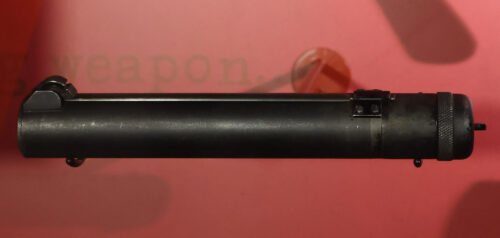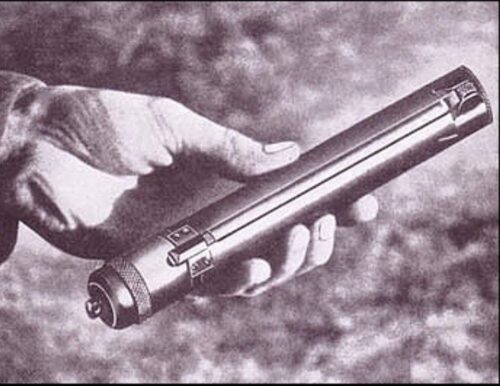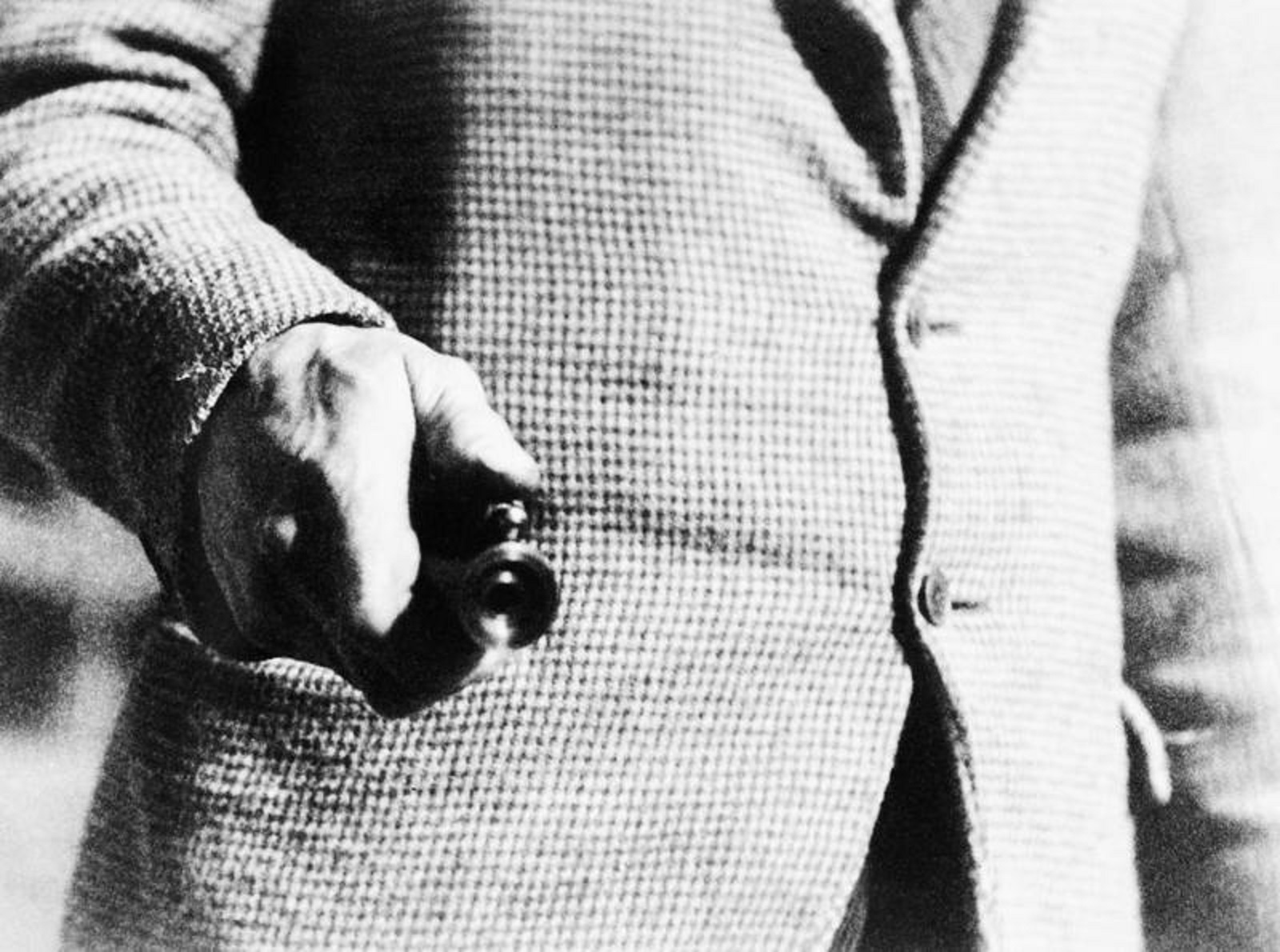SOE demonstration of how Welwand is employed as sleeve gun.
The Welwand. or “Sleeve Gun”, as ir was nicknamed, was a modification of the more recognized Welrod pistol of World War II. It was conceived by Major Hugh Reeves at Station IX of the Special Operations Executive (SOE). The weapon was described in the official SOE catalog as a ““short length, silent, murder weapon”.
The SOE was a secret British organization established in 1940 during World War II. Its primary mission was to carry out espionage, sabotage, and reconnaissance in territories occupied by the Axis powers. The SOE also provided support to local resistance movements in these areas. Despite its significant contributions during the war, the SOE was dissolved in 1946.
The Welwand’s unusual name is derived from “Wel” from “Welwyn Garden City”, a prefix used by covert equipment designed by Station IX, and “wand”, due to its tubular wand-like design. This naming convention was a way to obscure its purpose. The Welwand was designed from the ground up as a silent weapon for assassination, influencing its unique design.

The Welwand consisted of a basic suppressor tube that held a single .32 ACP round, which was loaded into the breech. The gun was then hidden up the user’s sleeve. Instead of a traditional trigger, the weapon featured a simple textured switch that was pushed forward and then pulled back with the thumb to discharge the bullet. The firing switch, located at the front of the weapon, and the trigger mechanism housing, which extended to the back to strike the primer, might be mistaken for front and rear sights in a photograph. The firing switch also served as a safety feature to prevent unintentional discharge while the weapon was still hidden up the sleeve.
The weapon was designed to be pressed directly against the target and fired. The suppressor silenced the shot, and the bolt-action design meant there was no sound from a cycling action and the spent casing stayed in the weapon, leaving minimal evidence of the event. The suppressor’s thick rubber baffles formed a very tight seal around the bullet but would need to be replaced after approximately 15 rounds due to damage from firing. The Welwand was not designed for quick reloading or for firing multiple shots in a single encounter. Its substantial weight allowed it to also serve as a makeshift bludgeon if necessary.
The SOE produced two versions of the Welwand, the MK I and MK II, with the main difference being the location of the cocking lever on the MK II, which was more streamlined and less likely to catch on the inside of the user’s sleeve. The Welwand were made by the Birmingham Small Arms company, which collaborated closely with the SOE during the war. The Welwand was listed as item number 254 in the classified Descriptive Catalogue of Special Devices and Supplies, published in 1945 by the War Branch.

Although 150 were made, it remains uncertain whether any of the Welwands were ever used in combat, unlike the more famous Welrod. Currently, only three examples of the Welwand are known to exist: one in a Norwegian museum and two at the Royal Armouries National Firearms Centre in Leeds, England.
Resource
Royal Armouries National Firearms Centre
RoyalArmouries.org
*The views and opinions expressed on this website are solely those of the original authors and contributors. These views and opinions do not necessarily represent those of Spotter Up Magazine, the administrative staff, and/or any/all contributors to this site.

